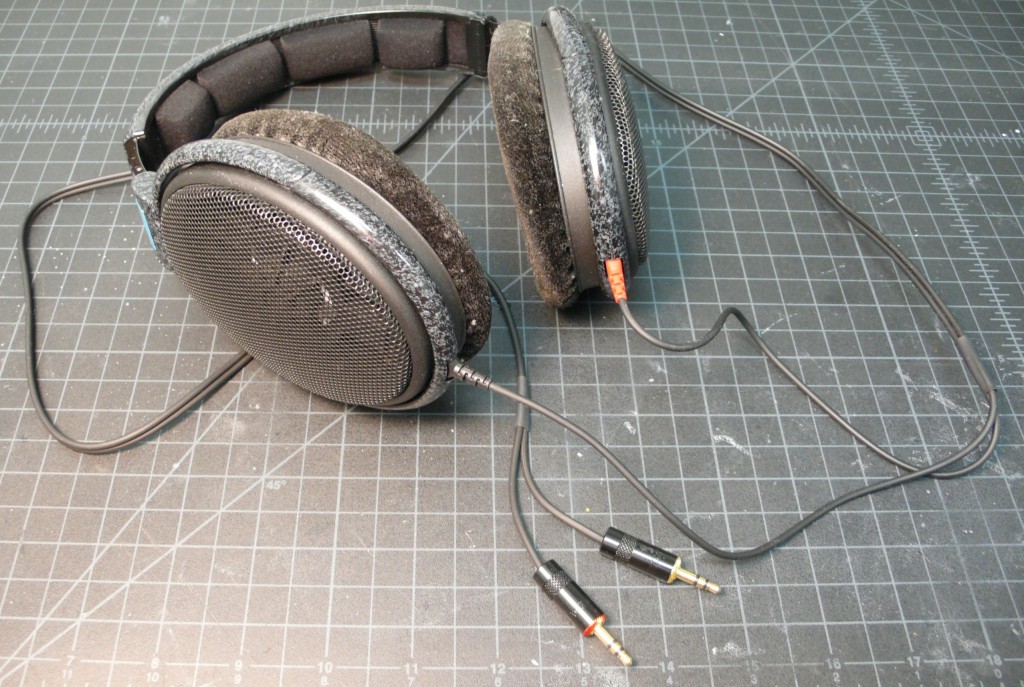The first thing to do is to cut off its 3.5mm (or 1/4″ on HD-650) stereo plug. At this stage cable may be shortened to the desired length: Sennheiser cords are not of the best quality (that’s why we have so many aftermarket cables) so the shorter it is, the better.
Each rubberized conduit has two multistrand wires, wound around nylon(?) thread. Each strand of copper is hair-thin and has a layer of coloured lacquer. Lacquer dielectric solves the problem of strands interaction but it is also the only insulation between the signal and ground/return wires. To solder these to a new 3.5mm stereo plug you must tin them first: protective layer of lacquer must be removed and copper strands must be covered with a layer of solder. If you decide to “just solder” these lacquered wires, you will be disappointed!
Googling the problem returns three tips for stripping lacquer insulation: 1) mechanical, by scraping it off with a scalpel blade; 2) heat, by burning it off with a lighter/torch; 3) stripping/tinning in one step by using “soldering pot”, by dipping the wire into a cup of molten solder. Each method works, with more or less disastrous results.
The best method has turned out to be the easiest. All that is needed is a pair of locking tweezers and a soldering iron (25W worked fine) with a flat tip. Attached pdf file shows each step of the procedure, hopefully it is self-explanatory. First make a big blob of molten solder on a flat tip of a soldering iron, then push the wire into the solder for a sec or two. Tweezers are necessary to divert heat from the wire so that only the tip loses its lacquer insulation.
Tech Sheet 3 from PonoKnowledge database shows wiring for the balanced mode, its a good idea to triple-check the final results against the diagram, drawn for us by C.Hansen himself! It is also a good idea to use locking tweezers when soldering wires to the 3.5mm connector, this improves the connection and also diverts the heat from the connector’s plastic parts. Insert the connector itself into some old headphone jack (old portable CD player) before soldering. Same idea here, to prevent plastic parts from melting.

